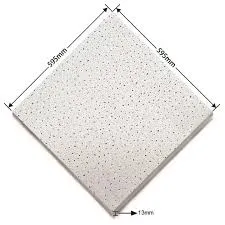- Afrikaans
- Albanian
- Amharic
- Arabic
- Armenian
- Azerbaijani
- Basque
- Belarusian
- Bengali
- Bosnian
- Bulgarian
- Catalan
- Cebuano
- Corsican
- Croatian
- Czech
- Danish
- Dutch
- English
- Esperanto
- Estonian
- French
- German
- Greek
- Hindi
- Indonesian
- irish
- Italian
- Japanese
- Korean
- Lao
- Malay
- Myanmar
- Norwegian
- Norwegian
- Polish
- Portuguese
- Romanian
- Russian
- Serbian
- Spanish
- Swedish
- Thai
- Turkish
- Ukrainian
- Uzbek
- Vietnamese
nov. . 09, 2024 16:11 Back to list
Exploring Various Types of Ceiling Materials for Grid Systems
The Evolution and Importance of Grid Ceiling Materials
In the realm of modern architecture and interior design, ceiling materials have evolved significantly, with grid ceilings emerging as a popular choice for both aesthetic and functional reasons. Grid ceilings, characterized by their modular framework, provide numerous advantages that contribute to the enhancement of spaces in residential and commercial settings. This article explores various grid ceiling materials, their applications, and the reasons behind their growing popularity.
Understanding Grid Ceilings
Grid ceilings, also known as suspended ceilings or drop ceilings, consist of a system made from a grid framework that suspends panels or tiles below the structural ceiling. This design not only conceals the original ceiling but also allows for easy access to wiring, plumbing, and ductwork—making maintenance much simpler. Additionally, grid ceilings offer an effective way to control acoustics, lighting, and insulation in a building.
Common Materials Used in Grid Ceilings
1. Mineral Fiber Tiles Mineral fiber is one of the most commonly used materials in grid ceilings. These tiles are made from a combination of natural or synthetic fibers, which provide excellent sound absorption and thermal insulation. They are lightweight, easy to install, and can be manufactured in various sizes and finishes, allowing for versatile design choices. Moreover, mineral fiber tiles often come with a painted finish or textured surface, enhancing their visual appeal.
2. Gypsum Board Gypsum board, also known as drywall, is another popular choice for grid ceilings. Known for its fire-resistant properties, gypsum board provides an additional layer of safety in many applications. It can be finished and painted to match the surrounding decor, offering a sleek and seamless look. However, unlike tile systems, gypsum board cannot be easily accessed, so it may not be the best choice for spaces with extensive mechanical systems overhead.
3. Metal Ceiling Tiles For those looking to incorporate a modern or industrial aesthetic, metal ceiling tiles provide an excellent option. These tiles are typically made from aluminum or steel and can be polished or painted to achieve different visual effects. Metal ceilings are highly durable and can reflect light beautifully, adding an element of sophistication to any space. Their resistance to moisture and fire makes them suitable for commercial environments, including kitchens and bathrooms.
4. PVC Panels Polyvinyl chloride (PVC) panels offer a lightweight and moisture-resistant alternative for grid ceilings, making them particularly ideal for areas prone to humidity, such as bathrooms and basements. Available in a wide range of colors and finishes, PVC panels can mimic the appearance of more expensive materials, providing a cost-effective solution without sacrificing style.
5. Acoustic Panels For spaces that require improved sound control, acoustic panels are often incorporated into grid ceilings. These panels are specifically designed to absorb sound and reduce noise levels, making them popular in environments like offices, schools, and auditoriums. Acoustic grid ceilings can be made from various materials, including foam and fabric-covered panels, allowing for both functionality and design flexibility.
grid ceiling material names

The Benefits of Grid Ceilings
The benefits of choosing grid ceilings over traditional ceiling materials are numerous
- Aesthetic Flexibility Grid ceilings can be customized with various panel designs, colors, and textures, making it easy to create a unique aesthetic that aligns with a building's overall design theme.
- Ease of Installation The modular design allows for quick and straightforward installation, minimizing disruption during construction or renovation.
- Accessibility Grid ceilings make it easy to access hidden mechanical systems, providing convenience for maintenance and repairs.
- Acoustic Control Many ceiling tiles have acoustic properties, contributing to a quieter and more pleasant indoor environment, which is vital in spaces like offices and schools.
- Energy Efficiency Certain grid ceiling materials can improve insulation, contributing to overall energy savings in a building.
Conclusion
Grid ceilings represent a significant advancement in ceiling design, marrying aesthetics with functionality. The variety of materials available—from mineral fiber to metal and PVC—ensures that architects and designers can find the perfect solution for any space. As building requirements evolve and the demand for flexible, efficient design continues to grow, grid ceilings will undoubtedly remain a vital component in modern architecture.
-
Transform Interiors with PVC Gypsum Ceiling: A Stylish, Durable, and Moisture-Resistant SolutionNewsMay.19,2025
-
The Smart Interior Upgrade: Discover the Durability and Versatility of Gypsum Ceiling Access Panel SolutionsNewsMay.19,2025
-
The Smart Choice for Interior Design: Discover the Value of PVC Gypsum Ceiling SolutionsNewsMay.19,2025
-
Mineral Fiber Ceiling Tiles: The Smart Blend of Performance and AestheticsNewsMay.19,2025
-
Mineral Fiber Ceiling Tiles: The Superior Choice Over Gypsum for Sound and Fire SafetyNewsMay.19,2025
-
Mineral Fiber Ceiling Tiles: Eco-Friendly Strength and Style for Every CeilingNewsMay.19,2025







